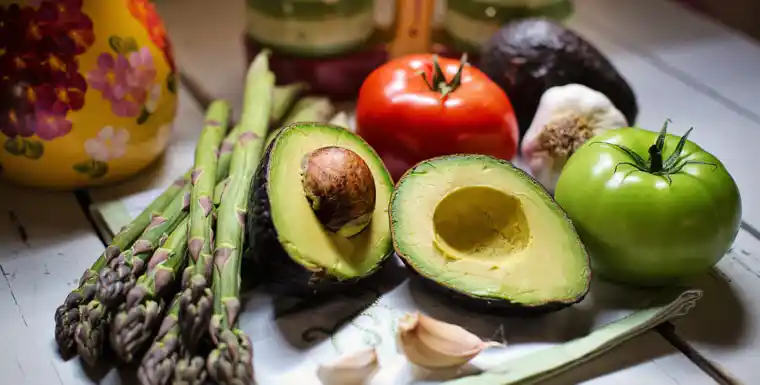In the prime years of your life, belly fat might seem like an uninvited guest. It’s not just about appearance; excess abdominal fat can herald serious health issues. Let’s cut through the jargon and give you a straightforward plan to tackle it head-on.

Quick Links
Understanding Belly Fat: A Straightforward Guide
Know Your Enemy: The Basics of Belly Fat
Belly fat often accumulates as you age, but it’s not a silent bystander. This type of fat, specifically visceral fat, goes beyond skin-deep. According to the Mayo Clinic, it can be a precursor to numerous health issues, including heart disease and diabetes. It actively secretes inflammatory substances and can interfere with your body’s hormone balance. Understanding the intricacies of belly fat is your first line of defense. Armed with knowledge, you can strategize effectively to mitigate its adverse health impacts.
Why It’s Crucial for Women Over 50
As women transition past the age of 50, the fight against belly fat takes on a new urgency. Hormonal shifts, notably a decline in estrogen, can cause a redistribution of body fat, with a tendency to accumulate around the abdomen. This isn’t just a matter of aesthetics; it’s a significant health concern.
The hormonal transitions can often lead to a sluggish metabolism, making weight management slightly more challenging than before. But this is not a battle lost; rather, it’s an opportunity to adapt and fine-tune your approach to health and wellness. It’s essential to confront this issue with tailored strategies that address the unique physiological changes occurring during this life phase.
Nutrition: Building a Sustainable Diet Plan

In your journey to curb belly fat, your dietary choices play a pivotal role. A well-thought-out, nutrient-dense diet not only aids in reducing belly fat but rejuvenates your overall well-being, setting a strong foundation for a healthier lifestyle. Let’s delve into constructing a balanced diet that aligns with your goals.
Creating a Balanced Diet Plan
Constructing a balanced diet is akin to nurturing a vibrant garden. Envision each food group contributing to a harmonious ecosystem that nourishes your body from the inside out. The key is to foster a diet where vibrant vegetables, hearty whole grains, and lean proteins are the stars, fostering a healthy symbiotic relationship with your body.
To make this vision a reality, focus on integrating nutrient-dense foods laden with vitamins, minerals, and fiber. Fill a considerable portion of your plate with nutrient-rich vegetables such as spinach, broccoli, and carrots, coupled with servings of whole grains like quinoa or brown rice. Balance this with lean proteins from sources like poultry, fish, or legumes, which not only aid in muscle maintenance but keep you satiated, curbing those untimely hunger pangs.
At a Glance – Foods to Include and Avoid
| Food Group | Foods to Include | Benefits | Foods to Avoid | Drawbacks |
|---|---|---|---|---|
| Proteins | Chicken, Fish, Lentils | High in lean proteins, aids muscle growth | Processed meats, Bacon | High in saturated fats, nitrates |
| Grains | Quinoa, Brown Rice, Oats | Rich in fiber, steady energy release | White bread, Pastries | Low nutritional value, rapid sugar spikes |
| Vegetables | Spinach, Broccoli, Carrots | High in vitamins & minerals | Canned vegetables | High sodium, reduced nutrient content |
| Fats | Avocado, Olive oil, Almonds | Healthy fats, heart health | Trans fats, Margarine | Increase bad cholesterol, heart disease risk |
As you navigate the nutritional path, it’s vital to identify allies and adversaries in your food choices. Incorporating foods rich in omega-3 fatty acids, like salmon and flaxseeds, can be instrumental in reducing inflammation, a known precursor to weight gain. Simultaneously, learning to avoid trans fats found in processed foods and sugary beverages is critical as they are notorious for promoting abdominal fat accumulation.
As you progress, you’ll cultivate an intuitive relationship with food, gravitating towards choices that nourish and fuel your body optimally. This intuitive eating approach not only fosters a harmonious belly but contributes to a radiant spirit, aligning with your goals of shedding that stubborn belly fat.
Portion Control and Meal Timing
Managing portion sizes and meal timing emerges as a significant pillar in your strategy to combat belly fat. Creating a rhythmic pattern in your eating habits can orchestrate a beautiful ballet of weight management, where grace meets self-assured control.
To perfect this, learn to recognize and respect the hunger and fullness cues your body emits. Establish a routine that includes regular, balanced meals, steering clear of large, late-night dinners which can interfere with quality sleep and weight management. A structured meal plan encompassing a hearty breakfast, a balanced lunch, and a lighter dinner can be a game-changer. Moreover, adopting the practice of mindful eating, where you savor each bite, can foster a nurturing relationship with food, facilitating both physical and mental satisfaction.

Exercise: Structuring a Targeted Workout Regimen
Exercise plays a critical role in your journey to reduce belly fat. Targeted and regular physical activity not only aids in shedding those stubborn pounds but revitalizes your entire body, fostering a sense of well-being and vitality. Let’s look at how you can structure your exercise regimen to yield maximum results.
Cardio Workouts: Your Ally in Calorie Burning
Cardio workouts stand as a cornerstone in your fitness journey, helping you torch calories and enhance your cardiovascular health. Incorporating a variety of cardio exercises can bring a fresh perspective and excitement to your routine. Consider integrating activities such as brisk walking, cycling, or swimming to keep your regimen diverse and engaging.
You don’t have to jump into high-intensity workouts right away. Start at a pace comfortable for you, gradually increasing the intensity as your endurance improves. Aim for at least 150 minutes of moderate aerobic activity or 75 minutes of vigorous activity each week, as recommended by most health organizations.
Strength Training: Sculpting and Toning Your Muscles
Strength training goes beyond building muscle; it’s about crafting a resilient body that serves you well. Engaging in strength training exercises not only helps in toning your muscles but enhances your metabolism, assisting in a more efficient calorie burn even at rest.
Start with bodyweight exercises like squats, lunges, and push-ups before gradually moving to weights. Remember to focus on form over speed to prevent any potential injuries. Additionally, ensure to work on all muscle groups evenly to foster a balanced physique. Incorporate strength training sessions 2-3 times a week for optimal results.
Specific Exercises for Targeting Belly Fat

To specifically target belly fat, you’ll want to incorporate exercises that focus on your core muscles. These exercises not only help in sculpting your waistline but enhance your posture and stability. Consider adding movements like planks, bicycle crunches, and Russian twists to your routine.
Moreover, Pilates and yoga sessions can be an excellent addition, focusing on core strength and flexibility. If you’re unsure where to start, seek guidance from a fitness professional to tailor a program that aligns with your physical capabilities and goals. Remember, consistency is key; a regular workout routine coupled with balanced nutrition will set the stage for visible, lasting changes.
Mindset and Motivation: Sustainable Your Success
Embracing a healthier lifestyle is not merely a physical endeavor but a mental one as well. Your mindset and motivation play a pivotal role in sustaining your journey towards reducing belly fat and enhancing overall health. Let’s delve deeper into how you can cultivate a mindset that fosters progress and resilience.
Setting Realistic Goals and Milestones
As you embark on this journey, it’s vital to set realistic and measurable goals. Begin by establishing clear short-term and long-term objectives, perhaps aiming to lose a certain amount of weight or aiming to achieve a particular waist measurement.
Documenting your goals can be a beneficial practice. Maintain a journal where you note down your weekly progress, including your diet, exercise regimen, and any other relevant factors. Seeing your progress in writing can serve as a powerful motivator, propelling you to stay committed and strive harder.
Moreover, remember to celebrate your milestones, no matter how small. Rewarding yourself for your achievements can foster a positive and encouraging atmosphere around your fitness journey.
Building Healthy Habits and Routines
Establishing healthy habits and routines is the cornerstone of a successful fitness journey. Consider crafting a daily routine that incorporates time for physical activity, balanced nutrition, and adequate rest. As you develop this routine, strive to make your habits automatic, integrating them seamlessly into your daily life.
Additionally, develop habits that nourish not only your body but your mind as well. Engage in activities that foster relaxation and mental well-being, such as meditation, reading, or pursuing a hobby. Furthermore, developing good sleep habits is pivotal in fostering overall health and well-being. Learn more about this in our detailed guide on establishing a restorative sleep routine.
Overcoming Challenges and Setbacks
Setbacks are an inevitable part of any journey. What matters is how you respond to these challenges. Cultivate a resilient mindset that encourages you to rise above obstacles and continue moving forward. When faced with setbacks, take a step back to evaluate the situation and adjust your strategies accordingly.
Consider seeking support from like-minded individuals or communities where you can share your experiences and gain encouragement. Sometimes, sharing your journey with others can provide new perspectives and valuable insights to overcome challenges more effectively.
Furthermore, learning to practice self-compassion is essential. Be kind to yourself during difficult times and recognize that progress is a gradual process. Your journey is unique, and every step you take brings you closer to your goals.
Additional Resources for Success
Your path to a healthier, happier self doesn’t stop at a well-rounded diet and regular exercise. It’s about cultivating a lifestyle that consistently supports your well-being. Below, we offer more tips and actionable advice to help you achieve success.

Supplements and Other Support Tools
In today’s environment, our bodies are constantly bombarded with toxins while the nutrients in food can be compromised due to mass production and processing. As such, relying on diet alone to provide all necessary nutrients can be a bit idealistic. Discover the best nutritional supplements that can dramatically improve your health and lead to a flatter belly amidst our modern-day challenges.
Apart from supplements, utilize technology to your advantage. There are numerous apps available that can help you track your nutrition, physical activity, and even provide guided workouts. These tools can serve as your personal assistant, helping you monitor your progress and stay on track.
Monitoring Progress and Adjusting Accordingly
Tracking your progress is vital in maintaining momentum and staying motivated. Set aside time weekly or monthly to evaluate your progress. Consider maintaining a progress journal where you can note changes in your body measurements, weight, and even jot down how you feel physically and emotionally.
Moreover, be prepared to adjust your strategies as needed. If you find that something is not working or could be improved, don’t hesitate to make necessary adjustments. Remember, it’s all about finding what works best for you personally, and it’s perfectly okay to tweak your plan as you move forward.
Final Thoughts
Remember that the path to a healthier, more vibrant you is a marathon, not a sprint. It requires dedication, persistence, and a balanced approach that integrates a nutritious diet, consistent physical activity, and mental well-being. Most importantly, it is a personal journey that should resonate with your individual needs and preferences.
As always, your safety is our top priority. For that reason, we strongly recommend consulting with your healthcare professional before making any significant changes. They can help you craft a plan that is both safe and suited to your specific health conditions and goals.
With the right strategies and support, saying goodbye to stubborn belly fat and embracing a life full of vitality and happiness is well within your reach. Step forward with confidence, equipped with the knowledge and tools to sculpt a healthier, happier you.
Frequently Asked Questions
What exercises target belly fat in women over 50?
Women over 50 can effectively target belly fat by incorporating a mix of cardio workouts and strength training into their routine. Cardio workouts like brisk walking, cycling, or swimming help in burning calories, while strength training exercises such as squats, lunges, and abdominal crunches focus on toning the muscles.
How does menopause influence fat accumulation in women?
During menopause, women experience a shift in hormone levels, particularly a decrease in estrogen. This hormonal change can lead to a redistribution of body fat, often concentrating around the abdominal area. Moreover, metabolism naturally slows down with age, which can contribute to weight gain. Adopting a healthy lifestyle with balanced nutrition and regular exercise can help manage belly fat during this phase.
What foods can help women over 50 reduce belly fat?
Foods rich in fiber, protein, and healthy fats can assist in reducing belly fat. Incorporate a variety of vegetables, fruits, lean proteins like poultry and fish, and whole grains into your diet. Foods rich in omega-3 fatty acids, such as salmon and flaxseeds, are known to reduce inflammation and aid in weight loss. Additionally, avoiding sugary beverages and processed foods with trans fats can help prevent abdominal fat accumulation.





